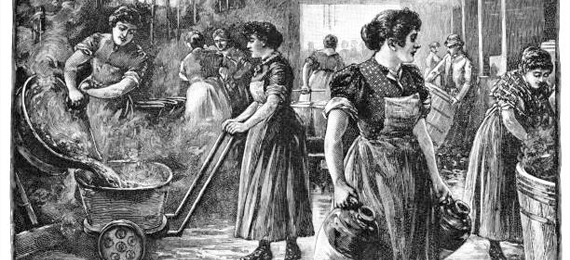
Scientists have discovered the evidence of hot springs especially near the places where our early ancestors lived. The proximity of the hot springs in the dwellings of our ancestors is the major reason for the discovery.
In Olduvai Gorge, a rift valley setting in northern Tanzania, a few old remains of our ancestors who have settled there have been discovered. Many fossils and stone tools of hominids in the region indicate the lifestyle of our ancestors 1.8 million years ago.
University of Copenhagen, MIT, and the University of Alcalá in Spain has conducted research and discovered the existence of hot springs near the early human archaeological sites in Olduvai Gorge. The placement and the proximity of these hot springs made scientists doubt that these hydrothermal features were used by our early ancestors to cook fresh kills before the invention of fire.
Ainara Sistiaga Is a Spanish Geoarchaeologist
- A. True
- B. False
The lead authors of the study say that this is the first time that scientists have put forth strong evidence proving the existence and usage of hot springs by our ancestors.
Ainara Sistiaga, a Spanish Geoarchaelogist and organic Geochemist with a background in human evolution joined an archaeological expedition to Olduvai Gorge. The researchers of the team collected sediments from around 3-kilometer- a long layer of rock that was deposited approximately 1.7 million years ago. They discovered that the top layer was striking and the layer just below it was dark clay. This deposition was found to have occurred around 1.8 million years ago. She collected the sandy rocks from the Olduvai Gorge and started to analyze them in order to find any kind of lipids that can contain residue of leaf waxes. She believed that this research could help find the kind of vegetation process that was followed by our ancestors.
During the research, they discovered a type of lipid that is completely different from plant-based lipids. Roger Summons, professor of Geology at MIT realized that they are a type of lipid that are similar to lipids produced by certain groups of bacteria that he and one of his colleagues had reported around 20 years ago.
Thermocrinis Ruber is a heat-loving organism that can only live in very hot waters such as hot springs. They can only grow if the temperature is above 80 degrees Celsius. Roger Summon also mentioned that some of the samples brought from Olduvai Gorge also had the same assemblages of those Thermocrinis Ruber types of bacteria which can only be found in high-temperature water.
This research helped them conclude that Thermocrinis Ruber, a type of heat-loving bacteria is what lived in Olduvai Gorge in around 1.7 million years ago. This is how the team ended up proposing that our ancestors used hydrothermal features for cooking foods. Additionally, Olduvai Gorge also found to have many upheaved volcanic activities for over millions of years, this could have also been the reason for the formation of hot springs. These are not the only few reasons that could tell us about the human-hot spring relationship. These sediments were collected from a place that is exactly adjacent to the early human habitation. During the research, they have also found stone tools and animal bones which led us to conclude that our early ancestors who lived more than 1 million years ago might have used hot springs in order to cook freshly hunted animals.
Even after much researches, there is no sure indication whether early humans used hot springs or not, hence there are many more studies to be conducted looking for such lipids and signs of hot springs throughout the Olduvai Gorge, and also in other areas of human settlements. Sistiaga says that though the usage of hot springs by early humans was found there is perfect evidence to show how humans interacted with them. People would have dipped the hunted animals into the hot springs or would have fished the animals from the hot springs that might have mistakenly fallen into the hot springs. Understanding the thoughts and behaviors of hominids who lived around 2 million years ago is very difficult, Sistiaga added.